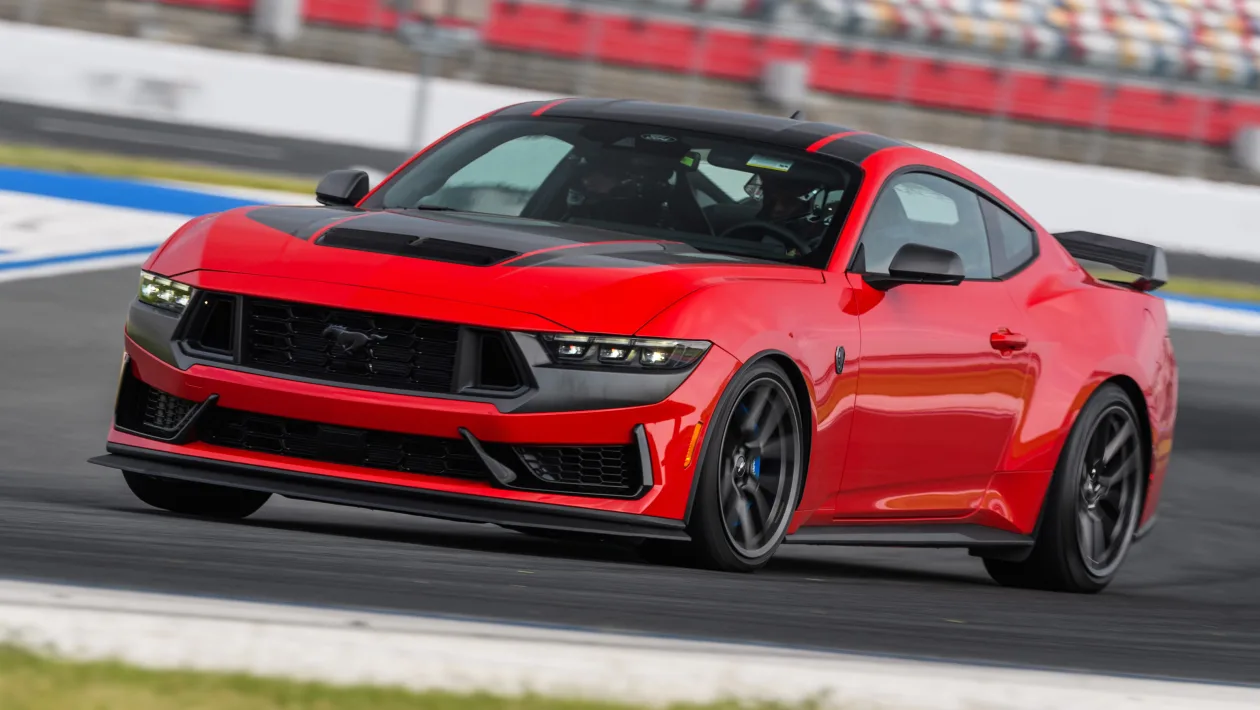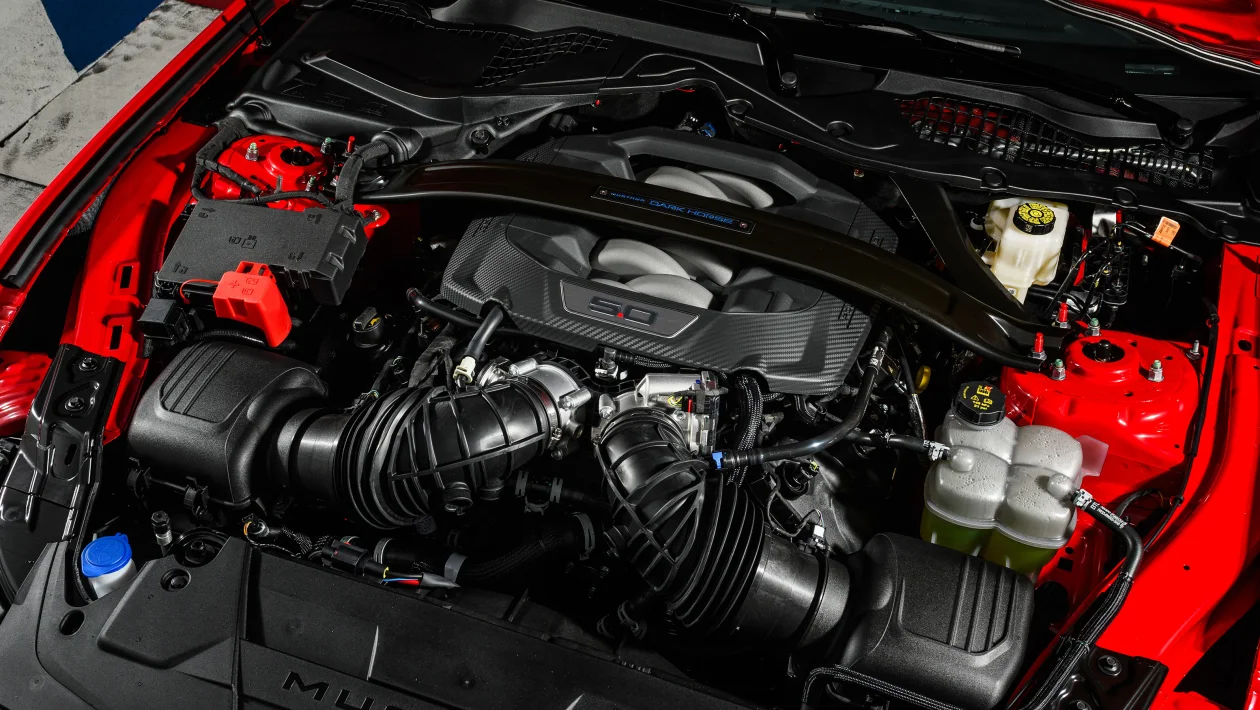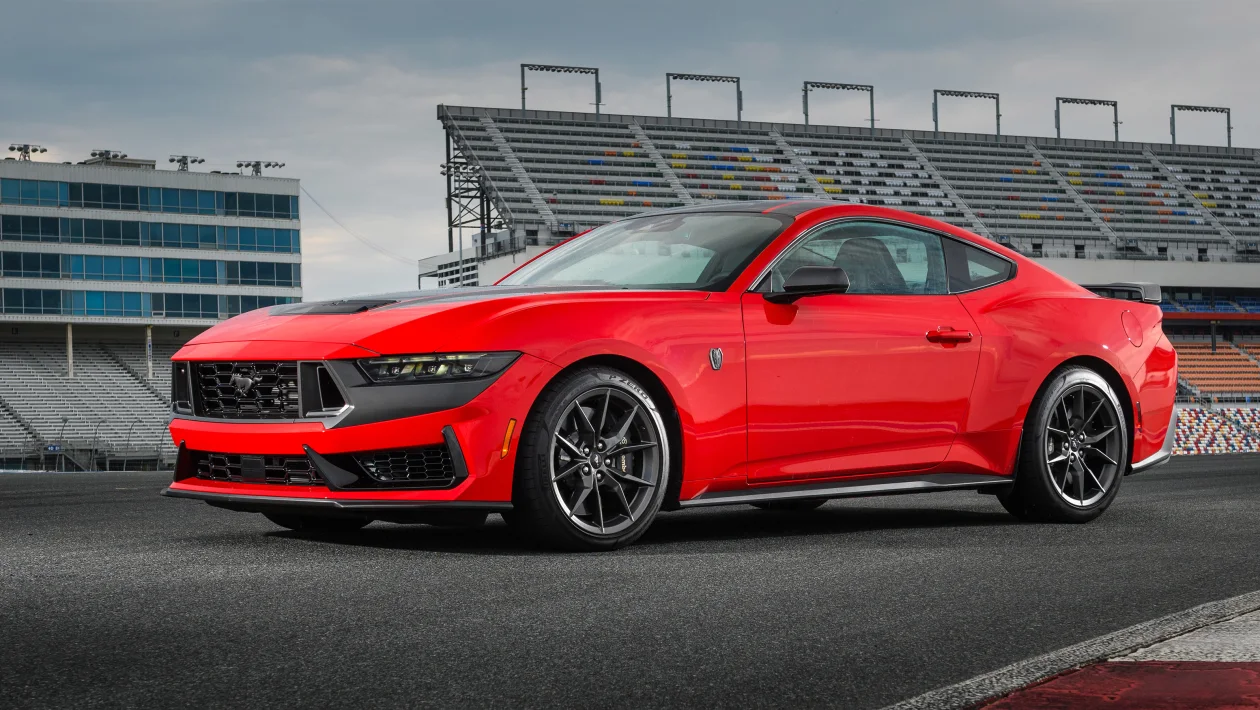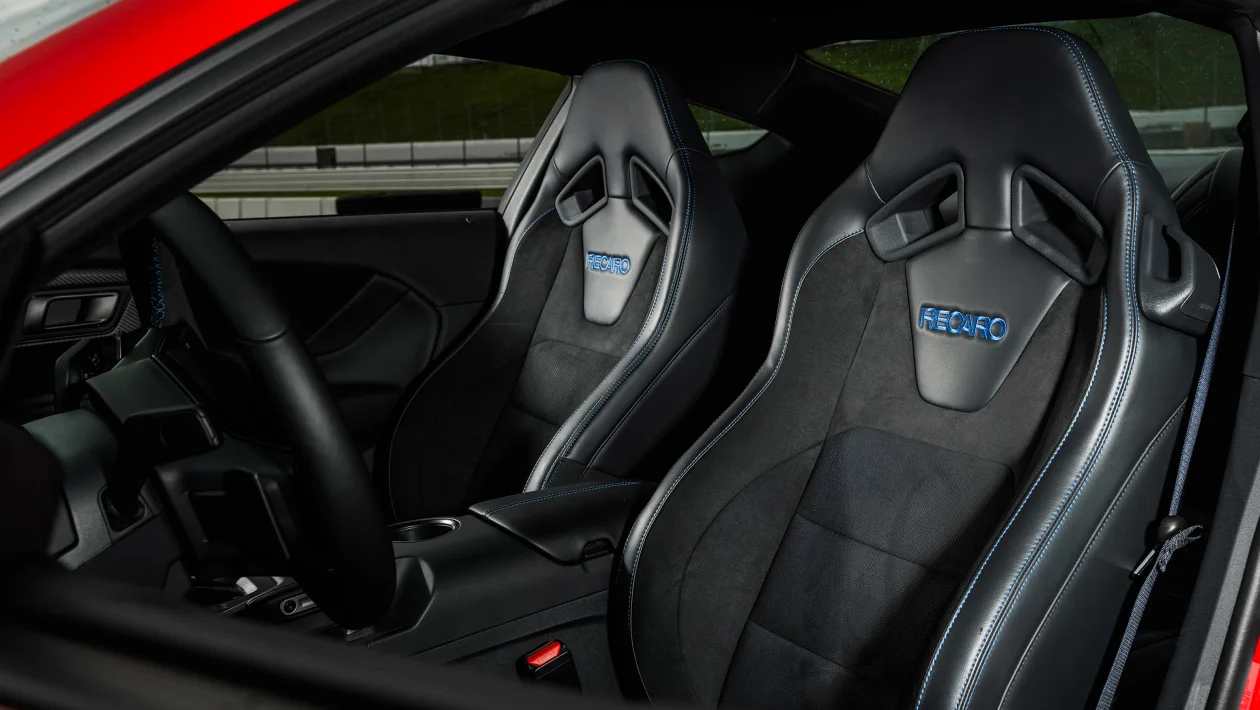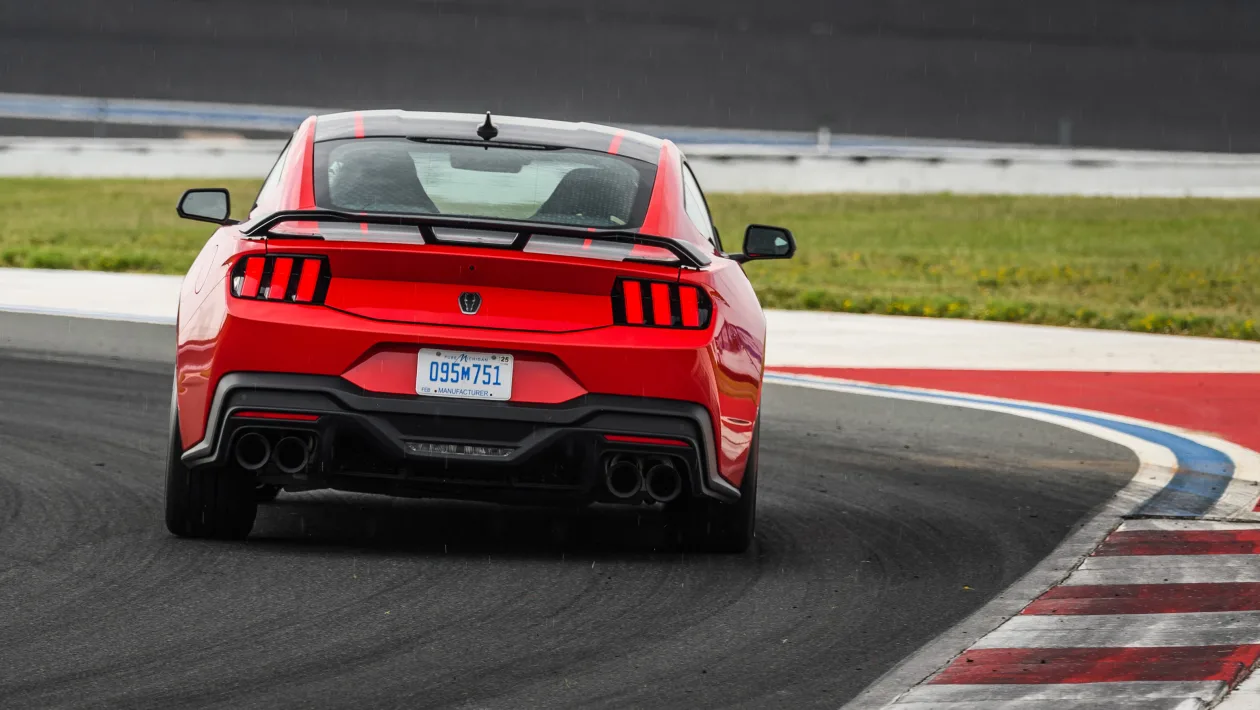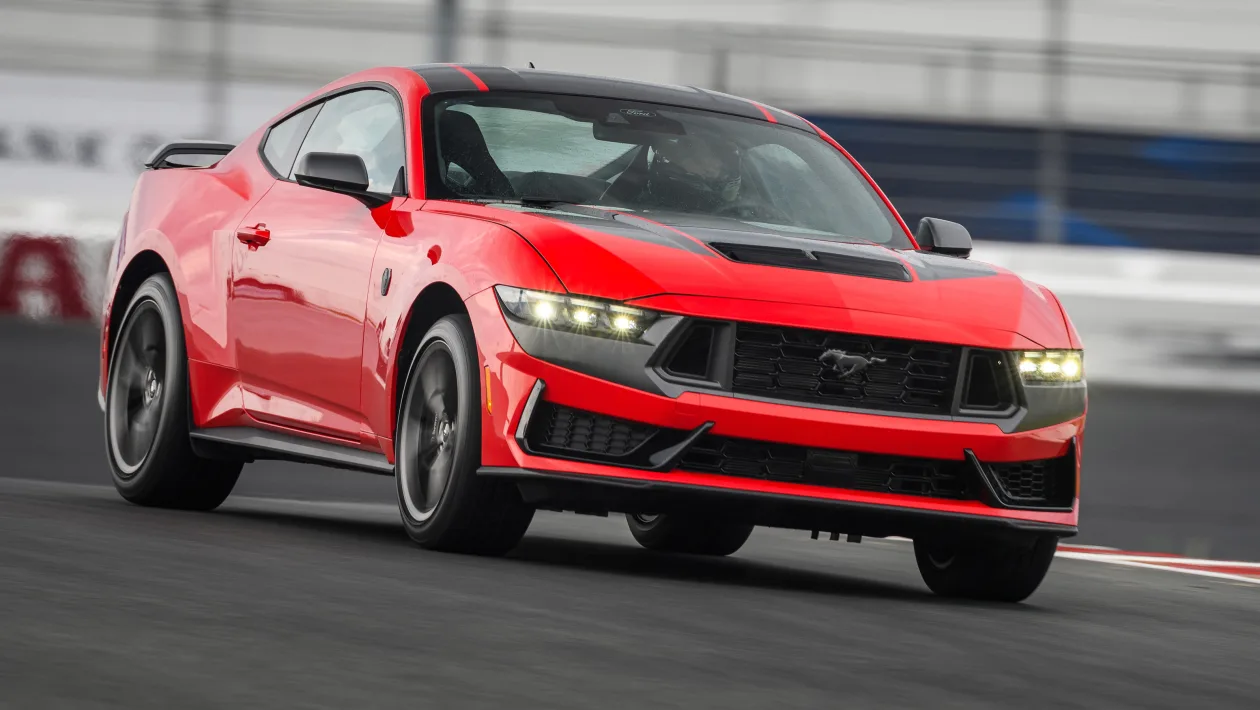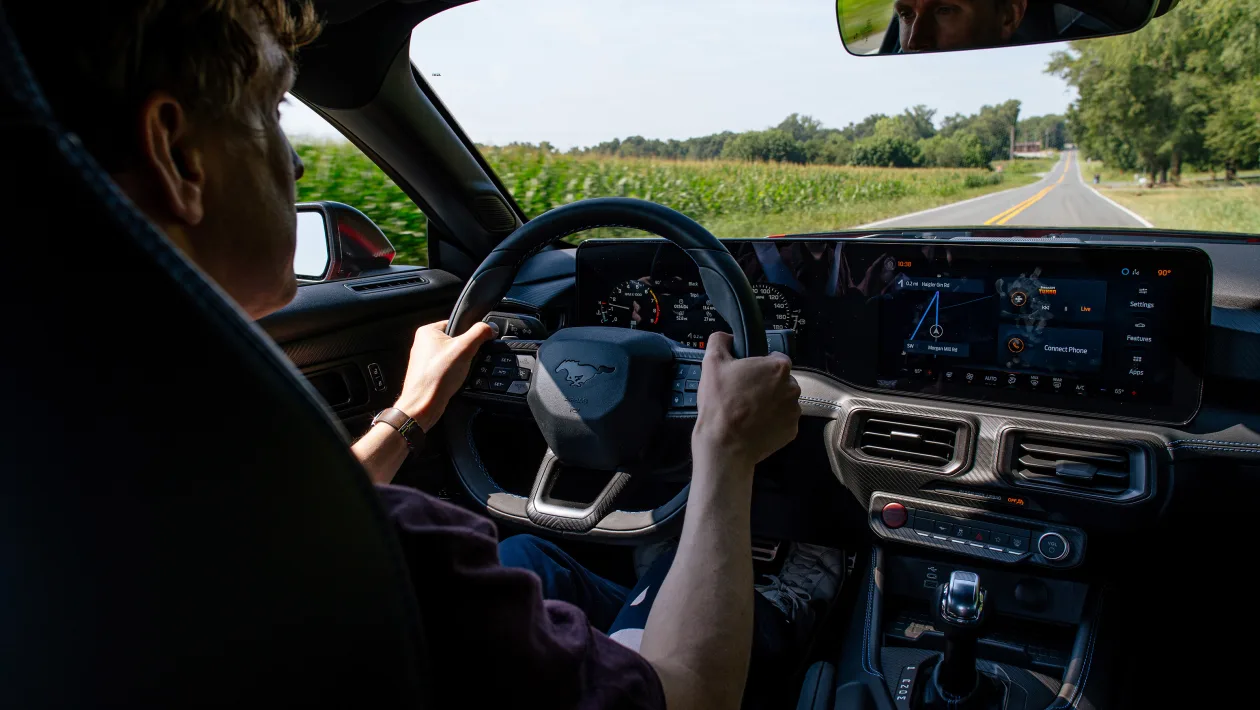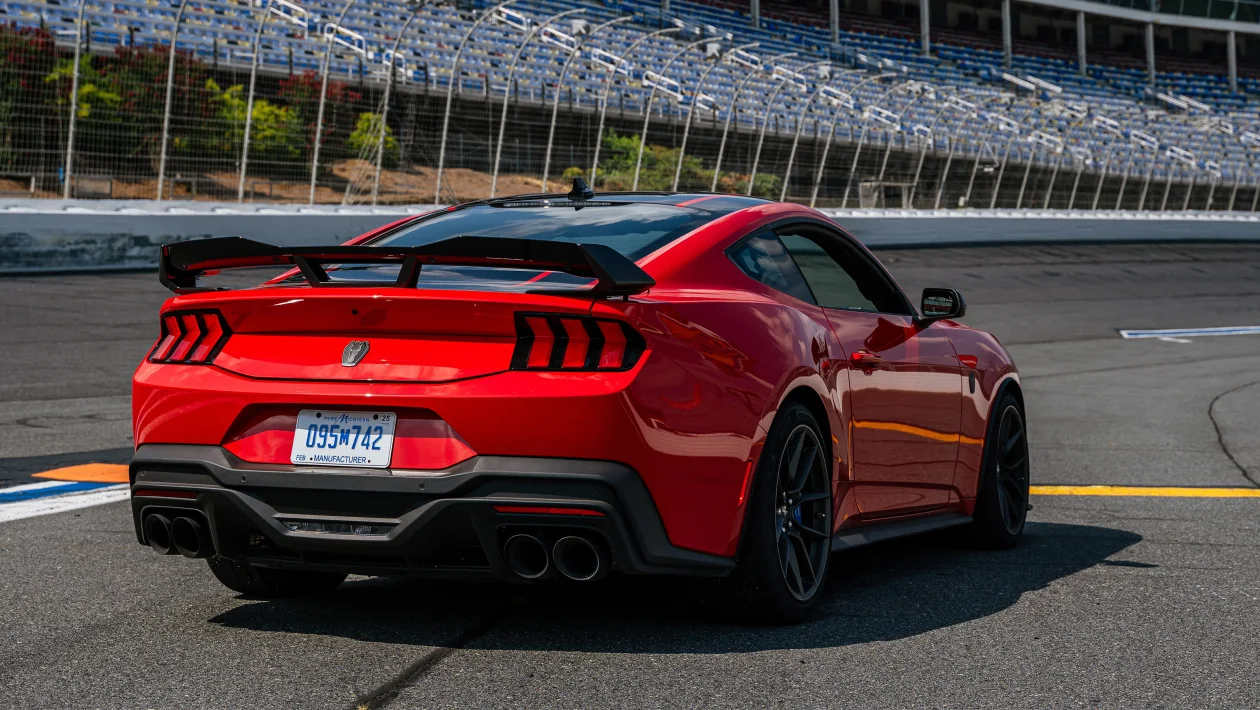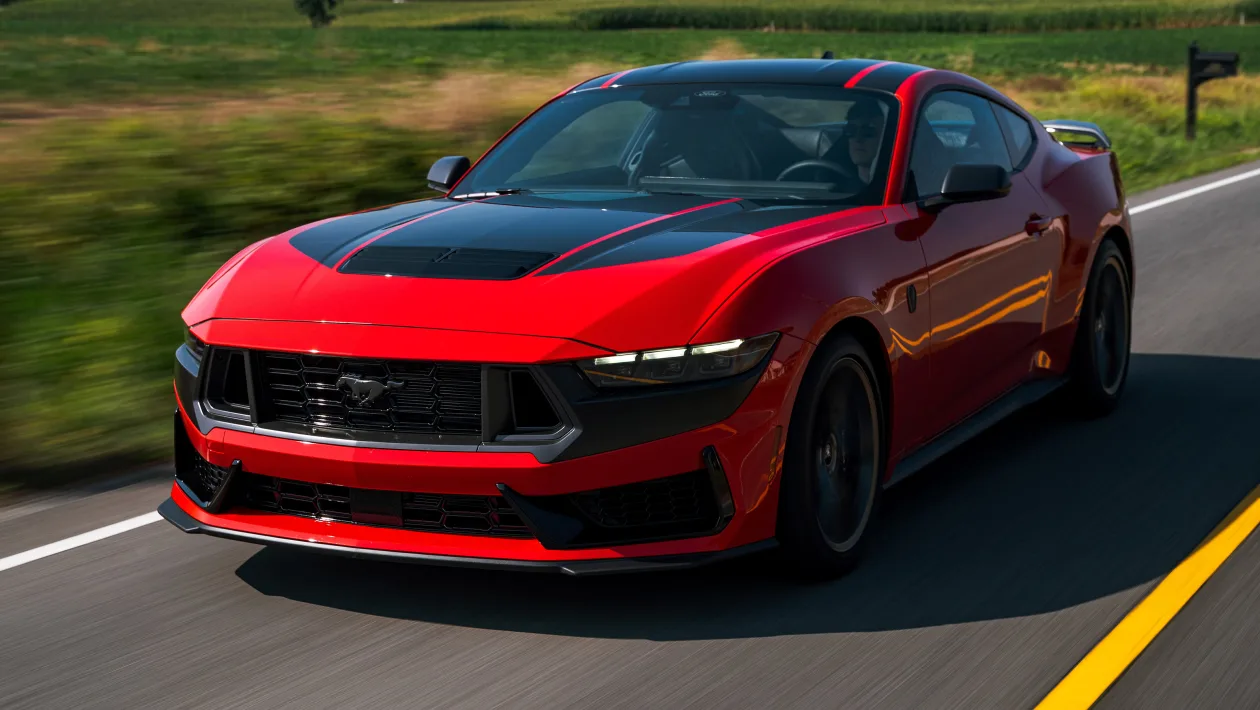Ford’s new-generation Mustang reaches Australia in the first half of 2024 with a new driver-focused Dark Horse model.
Time for a new Ford Mustang (well, predominantly new): the seventh-generation Mustang launches in the USA at the end of summer 2023, and goes on sale in Australia early in 2024. Time too for a new Mustang model: the range-topping Ford Mustang Dark Horse, tested here.
Ford describes the Dark Horse as the most track-capable 5.0-litre Mustang road car yet, combining extra power, cooling and aerodynamic improvements with bigger brakes and its own suspension settings, among other upgrades. In the USA, it’s the uppermost of three core Mustang variants: the entry-level 2.3-litre Ecoboost turbo four, the middling 5-litre V8 Mustang GT, and the Dark Horse.
Under the Dark Horse’s bonnet is the same latest-generation Ford Coyote V8 engine as the GT, albeit with myriad upgrades including the lighter con-rods used in the Shelby GT500. Open nostrils in the Dark Horse’s front grille feed dual throttle bodies, and it has a lighter radiator than other Mustang variants with more powerful cooling fans, along with a diff cooler and a separate transmission oil cooler for manual cars (buyers can choose between six-speed manual or 10-speed auto), plus extra NACA intakes for brake cooling.
In the USA it develops 500 horsepower (373kW) and 418lb ft of torque (567Nm). Power output for Australia is not yet confirmed. Pricing too will be ‘vaguely’ similar to the Mach 1, ‘but with 2024 economics,’ Ford Performance Motorsports director Mark Rushbrook says.
Separating the Dark Horse visually from other Mustangs are darkened headlights, a gloss black grille, fixed rear wing, side skirts and its own set of ‘forward-facing pony’ Dark Horse badges everywhere bar the nose.
Why the Dark Horse name? It’s the first time Ford has chosen a new label for a Mustang variant since the first Bullitt edition in 2001. Traditionally it’s used classic nameplates, such as the Mach 1, Boss 302, and so on, to play on the Mustang’s heritage. Ford says it’s partly because it wants to emphasise the Mustang’s track suitability, as new racing versions of the Mustang in GT3, GT4, the new Mustang Challenge series and beyond, will all be badged Dark Horse too. But it’s also because ‘we want to look forward to a new audience,’ Mustang brand manager Jim Owens tells us. ‘We want it to be a future collectible, and something that the new generation can take in.’
To that end, the Mustang has a screen-dominated interior, with two screens behind the same piece of glass: 12.4-inch behind the steering wheel for the instruments, 13.2-inch mid-dash for everything else (including, sadly, the air-con controls). Ford trialled the screen interface with focus groups in LA, Texas and Florida; they found younger potential buyers were keen and the interface ‘didn’t push the older generation away either; with previous Mustangs, one of the first things people would want to do is start the engine but in this car they generally sat for 15 minutes before starting the car, playing with the screen,’ Owens tells us.
The display behind the wheel can switch between different graphics, including one designed to replicate the instrument panel from the old ‘Fox Body’ Mustang of the late ’80s and early ’90s, sating cravings for a classic rev counter and speedo.
Although in some ways it seems a shame to exchange the traditional twin-cowl, ‘double eyebrow’ Mustang dashboard for a set of screens, the new setup is a smart, modern-looking interface, and the right-hand screen’s large size makes it user-friendly, without obscuring the bonnet line. I’d need more time with the car to make a definitive judgement on how intuitive it would be to use in daily life, but on brief acquaintance it’s a fast-responding system that does make the Mustang feel up-to-the-minute. The rest of the interior is less so, much of it from the front seats back familiar from the previous-generation Mustang.
This seventh-generation Mustang still clearly carries plenty of material from the sixth generation; many of the hard points, outside and in, are familiar: A-pillars, door cards, console between the seats and more are clearly carried over from its predecessor. (Including, frustratingly, the cupholders which get in the way of the gearlever once the steering wheel has swapped sides for right-hand-drive export cars.)
In place of the old manual handbrake, however, there’s an electric lever. In normal driving that functions as a regular parking brake – pull it up to engage it, push it down to release. But, after selecting a function on the touchscreen, it can also function as an ‘Electronic Drift Brake,’ designed to work with the ABS software to lock the rear wheels and help tip the car into a controlled slide on track. We didn’t get the chance to try this out during our short time with the car but it’s a neat idea and shows the Mustang still has a sense of humour.
Underway, first impressions are that the steering is a little faster and more responsive than the old Mach 1’s (Ford has fitted a quicker rack, among other measures to increase steering response), although it’s still not the most feelsome of steering systems in terms of feedback. The ride feels more pliant than the previous car’s: MagneRide dampers are standard fit, and they’re silky smooth over low-speed bumps and work well at higher speeds too. It’s a smoother, more controlled ride than the similar MagneRide system in the older Mach 1; Ford’s engineers explain that the latest software gives a much greater set of tuning parameters, and it works sweetly on the road. The Dark Horse also gets its own chassis tuning versus other Mustangs, with larger rear anti-roll bars along with specific settings for the MagneRide dampers.
With the dimensions essentially the same as the previous car, it’s a wide car, and feels it, even here in North Carolina, but you quickly adapt to it and it’s not an intimidating car to drive.
The exhaust sounds seriously fruity, even in the quietest of its four switchable modes. It sounds lovely, although borderline obnoxious in its louder settings. It has as deep and rumbly a note as the previous car’s older-generation Coyote engine, but with a harder, more high-frequency edge as the revs build. Power delivery is lovely and smooth, and it’s a lovely engine to spend time with.
We drive the 10-speed auto on the road; with so many ratios, its gearing is relatively short through the first few ratios, and shifts feel slurry at times. The manual option uses a Tremec ’box very similar to the Mach 1’s (a slightly different casing to marry it up to the new-gen Coyote engine and an altered final drive are the main differences) and it now has a blue titanium shiftball in place of the Mach 1’s classic white cue ball shift knob. One immediate observation on grasping it for the first time: it gets really hot in the sun.
We sample the manual at Charlotte Motor Speedway, on the ‘roval’ course incorporating one of the steep, banked NASCAR turns and tighter, undulating, technical corners on the infield. As before, there’s automatic throttle blipping rev-match software (which you can switch off if you prefer), which works beautifully on the road and very nicely most of the time on track, although there are a few moments where I hear the rear tyres chirrup and feel a shimmy from the rear axle while going down the gears for a tight hairpin.
There’s a flat-shift function, too; you can leave the throttle wide open while changing up a gear, as long as you dip the clutch as normal, and the software will ensure the shift goes through smoothly.
The Mustang is nicely balanced and predictable on track; it’s a friendly car, with benign balance, and it feels slightly less spiky towards the limit than the old Mach 1. It is still clearly a heavy car, however; official weight is yet to be confirmed, pending official European homologation, but it’s likely to be in a similar sphere to the Mach 1’s 1800kg+ kerb figure.
Stopping power feels up to the task in our three track sessions, although we drove hard for two flying laps at a time, with a warm-up and cool-down lap before and after. The Dark Horse uses 390mm brake discs at the front, with six-piston calipers, larger than the rest of the current Mustang line-up and with extra cooling provisions.
There’s an optional Handling Pack available in the US. We sample a Dark Horse fitted with the kit, which includes far more aggressive camber (adjustable at the front), a bigger front splitter and rear wing with Gurney flap and high-performance Pirelli Trofeo RS tyres.
The Handling Pack-equipped Dark Horse feels fantastic on the track. Almost like a racing car; it’s night and day difference compared to the standard-spec Dark Horse. Where that car is moving around under braking and under power, the Handling Pack car is rock solid, capable of quite remarkable cornering and braking performance. The on-board G-meter sees 1.4g under braking and 1.2g laterally in the Handling Pack car; the standard Dark Horse is closer to 1.2g braking and 1.1g in cornering.
Even if the price has increased, it’s one of very few naturally aspirated V8-engined production cars still available to buy – and perhaps one of the very last with a manual gearbox. The good news is, that’s not the only reason to consider buying one. This is a fun, capable performance car and there’s nothing else out there quite like it.




